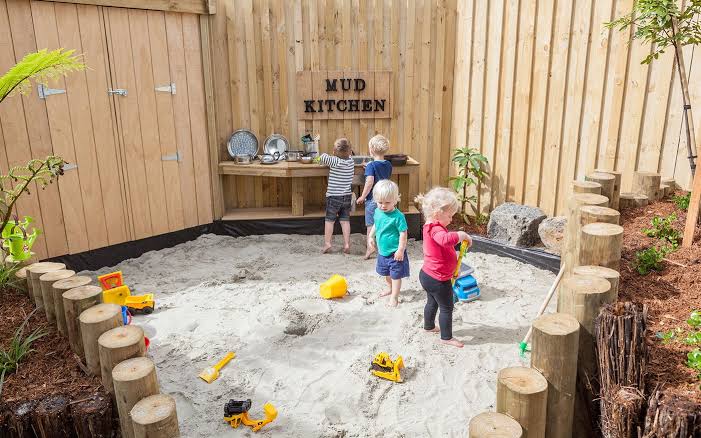Constructing Sandpits/Sand Area's
- Adam Stride
.png/v1/fill/w_320,h_320/file.jpg)
- Dec 20, 2022
- 2 min read
Updated: Feb 13, 2023
Sand pits within play areas.
The Ministry of Education's Early Childhood facilities licensing framework includes a requirement for "Constructive Play" elements, which can include sand play or sandpits. While there are no mandatory regulations for sandpits, there is a significant amount of literature available that provides guidance and recommendations from the education sector.
Sand - outdoors should contain an assortment of:
sandpit and cover
shade in summer
tap/hose for water
a selection of buckets, spades, shovels, rakes
scoops, funnels, sieves
trucks, diggers, graders, etc
PVC pipes and guttering, planks of untreated wood
natural materials, e.g. rocks, tree trunks, leaves, shells, flax
driftwood, small planks
Main considerations
Dig the sand area up to 600 mm deep and create an edge to separate it from the surrounding soil. Tanalised posts or marine ply are good options for edging.
Consider accessibility for children with disabilities or very small children, and how natural you want it to look.
Create edging up to 200 mm above ground level to contain the sand without obstructing most children's access, or design the sandpit without raised edging for children to crawl into it.
Use tussocks and large rocks as a natural barrier between the sand area and other activities, but ensure the other side of the rocks is not near climbing equipment or fall-prone areas.
Line the bottom of the pit with 300 mm of scoria if there is no stormwater drain, or if there is a drain, use scoria to contain it.
Cover the scoria with filter cloth, mud matting, or shade cloth to allow water to drain through but prevent children from digging up the scoria.
Add around 500 mm of sand, with dune sand or East Coast sand being good options for making sandcastles.
Covers, seating and shade
The Education (Early Childhood Services) Regulations recommend regular checks of equipment, premises, and facilities for potential hazards to children, such as dangerous objects and foreign materials. Sand areas should be covered or raked and inspected daily for animal droppings and hazardous objects. It's also recommended to discuss with other ECE services for useful covers and natural shade options like trees, as well as to build a rounded seat around the sand area. If covered, the covers should be easy to remove, allow for proper ventilation, and allow rain to clean the sand. A suitable sun shade should also be provided, and it's important to consider the pros and cons of various solutions.
Size and position
When planning the sand area for children's play, it's important to carefully consider its size and location. A warm and easily supervised location is recommended. For sand pits, larger sizes are generally better, as they are more conducive to children's play and exploration.
Storage and other considerations
It's a good idea to have a nearby tap for adding water to the sand area. It's also recommended to have a storage area for equipment located near the sand area, which can allow children to choose their own equipment if possible, while also saving time for teachers. Additionally, consider including a decking platform near the sand area for extended play, such as with water troughs, water spouts, or dramatic play items.
For further sand area construction information refer: SNZHB5828.2-2006









Comments